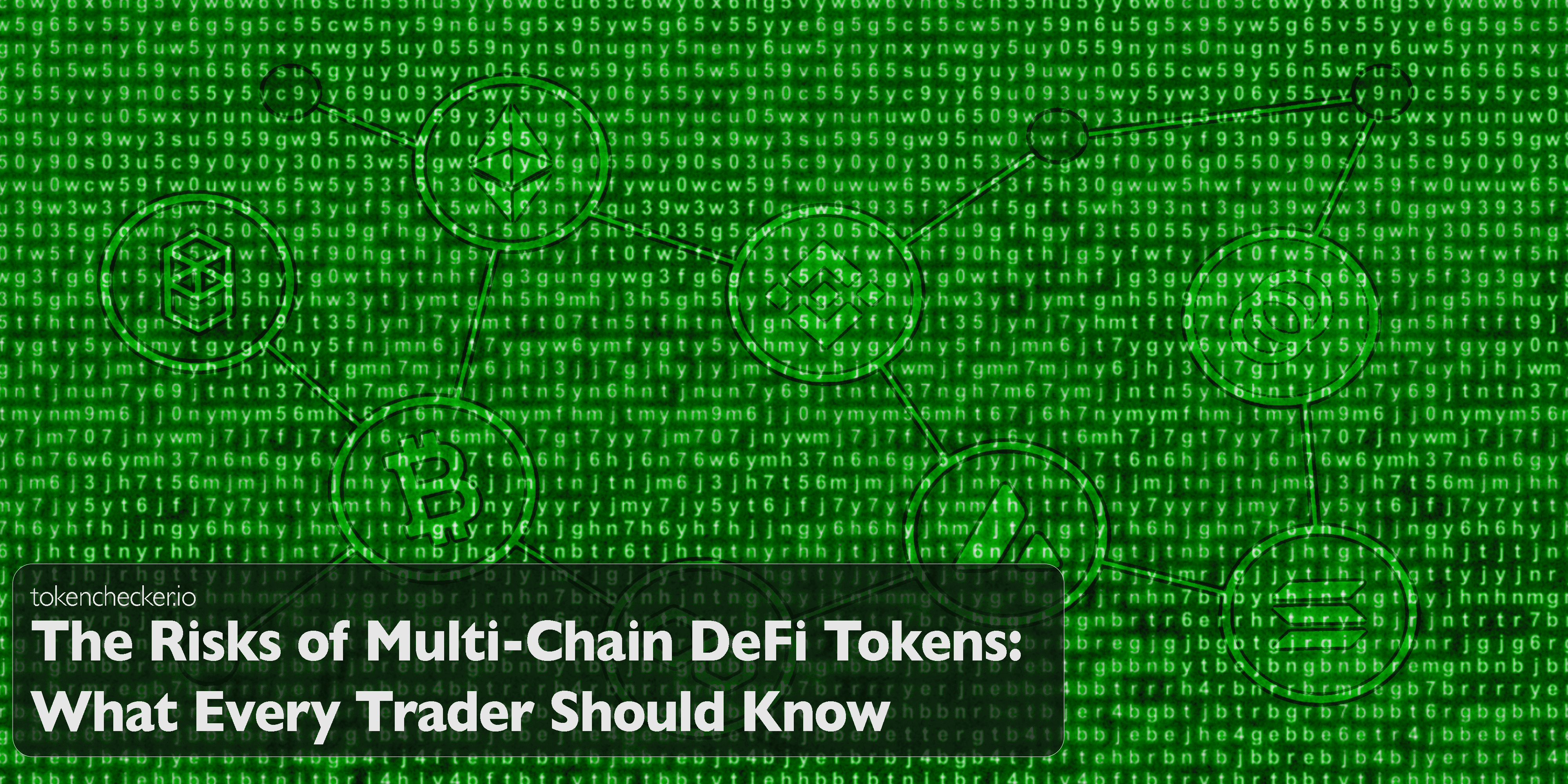
The Risks of Multi-Chain DeFi Tokens: What Every Trader Should Know
Introduction
Multi-chain DeFi tokens promise seamless interoperability, wider access to liquidity, and freedom from blockchain silos. On the surface, this sounds like the future. But under the hood? You’re looking at one of the most complex and vulnerable setups in all of crypto.
If a single smart contract bug can drain millions, imagine what happens when you're operating across five, ten, or more blockchains. The risks don't just multiply they compound. This article breaks down the hidden dangers that come with multi-chain tokens and why they deserve extra scrutiny.
What Are Multi-Chain Tokens, Really?
Multi-chain tokens aren’t just tokens that "exist" on several chains they’re complex systems connected by bridges, minting mechanisms, and wrapped assets. Most use a lock-and-mint setup: the original token gets locked on one chain while a copy (a wrapped version) is minted on another. Others use liquidity pools to simulate the swap.
This architecture brings flexibility, sure but it also creates:
- Multiple points of failure
- Greater attack surfaces
- Complex dependencies you may never see coming
If something breaks in that chain of logic—whether it’s the bridge, the minting contract, or an oracle—you’re at risk. And if you’re not reading the contract code for each link? You’re trusting strangers with your money.
Smart Contracts: One Vulnerability, Multiple Chains
Smart contracts in a multi-chain setup need to coordinate across vastly different systems. That’s hard to do perfectly.
Some key failure points include:
- Reentrancy attacks (like the DAO hack)
- Flash loan exploits that manipulate pricing and drain liquidity
- Improper validation of inputs across chains
- Logic flaws that don’t account for edge cases in timing or liquidity
What’s worse, a single vulnerability can be exploited across every chain the token touches. If your token is deployed on Ethereum, BNB Chain, and Arbitrum, and one chain’s contract is flawed, your whole ecosystem is at risk.
Bridge Risks: Where Billions Have Vanished
If there’s one word that should make you cautious with multi-chain tokens, it’s this: bridges.
Bridges are how tokens hop between chains but they’re also the number one target for attackers. Over $2.5 billion has been stolen from bridges since 2021.
How? Common failure points include:
- Validator compromise (e.g., Ronin’s $624M hack)
- Smart contract logic errors (e.g., Nomad’s $190M bug)
- Poor key management by centralized teams
- Oracle failures feeding false data to cross-chain protocols
If the bridge goes down, wrapped tokens become worthless. And most users don't even know what bridge their token depends on.
Fragmented Liquidity = Unfair Markets
One of the goals of multi-chain deployment is to increase liquidity but in practice, it often fragments it.
Each version of a token might have its own pool on a separate DEX, leading to:
- Higher slippage
- Increased impermanent loss for LPs
- Easier arbitrage for bots
- Worse execution for retail users
If you’re using a yield farming platform or lending protocol across multiple chains, you could be exposed to wildly different liquidity profiles depending on where your funds are deployed. That’s not just inefficient it’s dangerous.
Stablecoin Risk and De-Peg Cascades
Stablecoins are the glue of DeFi and they’re everywhere in multi-chain systems. But if a wrapped stablecoin de-pegs on one chain, the damage doesn’t stay local.
For example:
- A single oracle failure can trigger a false price feed
- A de-pegged wrapped USDC on one chain could cause mass liquidation in DeFi lending platforms on another
- Flash loan attacks on low-liquidity chains can ripple across ecosystems
This is especially risky when the same stablecoin is used for collateral across multiple chains. If confidence breaks on one, the whole system can unravel.
Centralization and Keyholder Risk
Despite the decentralization narrative, many bridges and multi-chain systems rely on:
- A handful of validators
- Admin-controlled upgradeable contracts
- Privileged wallets with god-like access
When five people can drain a nine-figure bridge wallet (as happened with Harmony and Ronin), you're not in a decentralized system. You're trusting a small team with billions.
In some cases, compromised developer keys or rogue insiders have led to:
- Infinite minting of tokens
- Smart contract upgrades with backdoors
- Asset withdrawals to personal wallets
tokenchecker.io’s Creator Wallet Analysis can help flag this type of behavior before it wrecks a project.
Regulatory Unknowns
Operating across chains often means operating across countries. That brings:
- Legal ambiguity around token classifications
- KYC/AML enforcement challenges
- Potential sanctions violations if cross-chain dApps interact with blacklisted addresses
A token that’s “fine” on one chain might face legal scrutiny on another. As global regulators catch up, multi-chain protocols are walking blindfolded across legal landmines.
How tokenchecker.io Helps You Navigate This
You can’t manually analyze every chain, every bridge, and every wrapped version of a token. But tokenchecker.io does it for you:
- Flags risky contracts across all chains
- Identifies honeypots, mint functions, and rugpull setups
- Tracks sniper wallets that show coordinated bot behavior
- Detects creator wallets dumping tokens across multiple chains
- Verifies if liquidity is actually locked or just claimed to be
If a token looks safe on one chain but shady on another, tokenchecker.io will tell you.
Final Thought
Multi-chain sounds like progress and in some ways, it is. But it also means more trust assumptions, more moving parts, and more ways to lose money.
Before you jump into a multi-chain token, ask: Who controls the bridge? Who holds the keys? What happens if one version fails?
With tokenchecker.io, you get answers. Not marketing hype.